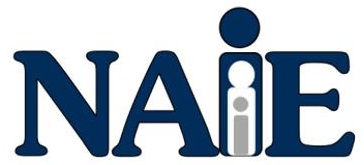Return to the COVID-19 Resource Page | Download PDF | April 4, 2020
The National Association of Interpreters in Education (NAIE) acknowledges that this is a challenging time for educational institutions and the nationwide move to virtual instruction is unprecedented. This memo is being issued to provide clarification and support regarding the essential continuation of educational interpreting services for students who are deaf, hard of hearing, and deafblind (D/HH/DB).
While the current situation is not ideal, there are a plethora of resources available to support the continued provision of educational interpreting services. Per the Department of Education Office of Special Education and Rehabilitative Services Supplemental Fact Sheet issued on March 21, 2020, modifications shall be made to provide educational interpreting services remotely.
Connecting and communicating with D/HH/DB students and their families is critical during this time. Regardless of employment model (part-time, full-time, salaried, hourly, or contracted), educational interpreters should continue to be employed and compensated parallel to the procedures implemented for instructional personnel, such as classroom teachers. In addition to interpreting, educational interpreters can guide educators, D/HH/DB students, and their families on how to transition to remote interpreting access.
As related service providers prescribed by Sec. 300.34 of IDEA, the specific roles and responsibilities of educational interpreters are individualized for each student. Many D/HH/DB students are relying on educational interpreters as their primary language models who contribute to students’ linguistic, academic, and social growth throughout the school year. Families of D/HH/DB students may not possess the language skills necessary to convey the wide range of academic and other topics for continued instruction. Educational interpreting services should remain available and flexible to support language development and access to instructional materials.
We conclude by emphasizing the myriad of interpreter responsibilities that will be necessary during this time:
- Preparation for interpreting-related tasks, such as securing resources, mastering technology, and consulting with educators/families regarding accessibility strategies
- Simultaneous (real-time), consecutive (recorded), and on-call interpreting for all audible and printed content, including opportunities for interaction and self-directed materials
- Collecting and creating supplementary resources in sign language such as children’s stories and novel chapters
- Informal sign language instruction and support for students, educators, and families
- Assisting with other accessibility-related tasks such as captioning videos
- Participation in professional development activities
We genuinely appreciate your special consideration regarding the continued provision of communication access for all D/HH/DB students during this challenging time. Through our COVID-19 webpage, we will continue to provide guidance and relevant resources for supporting educational interpreters, educators, and school districts with the tools to maintain these essential services. Please send specific questions regarding this guidance to info@naiedu.org.
Additional Resources
Professional Guidelines for Interpreting in Educational Settings
Educational Interpreter Roles and Responsibilities Guiding Checklist
